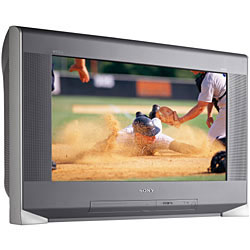When the notion of creating high-definition, commercial broadcast television in the U.S. first arose in the 1980s, few were ready for it. Sure, with its exceptionally sharp, wide screen and rich colors, the appeal of HDTV to film and television producers was considerable. But broadcasters faced significant technical and economic hurdles making the leap. Federal regulators had a lot of catching up to do. And consumers were naturally wary of buying an expensive new television system for which there was not a lot of program content.
For the most part, those issues have been resolved. Bandwidth problems and standards for broadcasting and manufacturing have been sorted out, including thorny questions about how to accommodate, with the same signals, HDTV afficionados as well as owners of popular non-HD digital sets and increasingly anachronistic analog TVs. (Most of us grew up with the latter and will live to see them phased out in years to come.) Other challenges, such as developing HD technology that also gets the most out of DVDs and video games and interfaces with digital cameras and computers, as well as replacing bulky set-top converters with postage-stamp-sized wireless cards, have been handled ingeniously.
Buying into HDTV makes sense now, though it is hardly imperative for one’s future television enjoyment. Local network affiliates in the Seattle area (KING, KOMO, KIRO, KCTS, etc.) offer a significant amount of programming in high definition. Cable and satellite TV providers do the same for those extra channels, and HDTV manufacturers have created consumer options through a variety of delivery systems mixing and matching universal and proprietary technologies. Most HDTV sets can receive over-the-air HD signals broadcast by affiliates and received at home by an antenna, potentially eliminating the need for cable. HD-ready sets range in price from under $1,000 for those suited to small rooms (though these less-expensive models usually require purchase of an HDTV tuner) to over $20,000 for an overwhelming theatrical experience at home. The best low-end (and complete) HDTV set with a reliable brand name might be Sony’s KD34XS955, a 34-inch FD Trinitron with a stand for $1,999.
What is HDTV exactly? The first noticeable difference is that an HD screen is much wider than that of analog TV. With analog TV, the width of a picture is divided by the picture’s height, and will always produce a 4-to-3 ratio. HDTV has a 16-to-9 ratio—more like a movie screen. HDTV also has more than six times the clarity of analog, with more than 2 million pixels compared to not quite 350,000 for analog. Color resolution is twice that of the old system, and high-definition sets offer CD-quality sound.
One clarification: HDTV is a form of DTV (digital television), an umbrella term for a new method for transmitting television signals that is gradually replacing analog broadcasting. It was adopted by the Federal Communications Commission in 1996. DTV also includes SDTV (standard-definition television), which is an improvement on analog but does not offer HDTV’s superior picture resolution and sound. When shopping for HDTV, be sure you’re looking at actual high-definition sets and not simply wide-screen digital versions of the old standard.
Now the big questions. Cathode ray tube (CRT) versus liquid crystal display (LCD)? Front projection versus rear projection? Plasma versus other types of flat-panel screens? There are far too many manufacturers to list here, but a review of several types of sets might be helpful. Above all, before buying HDTV in a shop or online, trust your eyes and ears and try to imagine how much space these sizable toys will take up in your viewing area.
Flat-panel plasma display is a new technology that uses gas, in plasma form, to react with the phosphors in green, red, and blue subpixels to get rich, dynamic colors. The monitor typically comes with an HDTV tuner, can be wall-mounted, and is less than 6 inches thick. It is also backlit, meaning that the screen performs well in bright rooms. Unlike cheaper, mirror-based projection systems that concentrate reflection to a narrow viewing area for brightness, plasma allows for bright, clear images within 160 degrees of the screen’s center.
There is a wide variety of flat-panel plasma display sets to choose from. One interesting model from Philips offers a 42-inch screen bolstered by the com-pany’s Ambilight process, which back-projects light from the screen’s sides to complement image hues—an effect, the company says, that heightens the viewing experience ($4,400).
More economical systems can be found in CRT or LCD projection systems, though dimness, as mentioned above, can be a problem. A relatively inexpensive, brand-name set with real appeal is Sony’s KDP-51WS655, a 51-inch HD CRT projection television ($2,100).
Another excellent option, with pricing comparable to plasma sets, is a television using Digital Light Processing (DLP), a system favored in many public venues that use large screens. In DLP, every pixel on a small, pivoting chip is a reflective mirror, amplifying light from a high-speed, rotating color wheel. Because of that self-amplification, brightness and contrast are even across the entire surface of a screen and there is no limit to a screen’s size. Toshiba has the promising 52HM84, a 52-inch HD-ready projection DLP TV ($4,000), while Panasonic’s 50-inch PT-50DL54 ($3,299.95) is a good-looking machine with all the com- pany’s standard HDTV extras.








